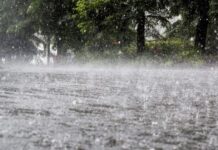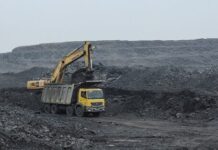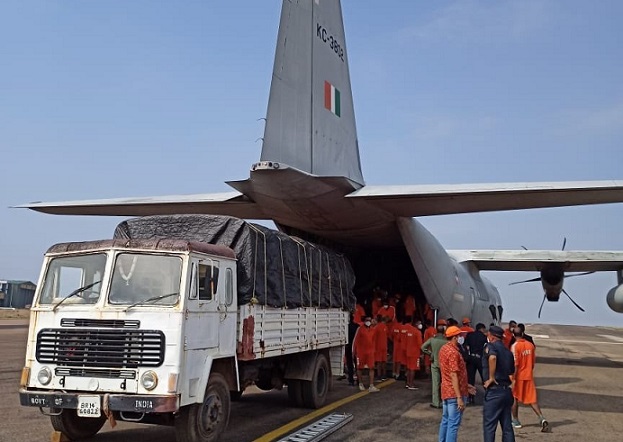By Our Correspondent
BHUBANESWAR: Ahead of cyclone Yaas, NDRF Teams on Saturday arrived here at Biju Patnaik International Airport from Gujarat , where they were stationed for Tauktae. As per the direction of the State Government, teams will be mobilised for respective destinations. The NDRF team flown from Gujarat’s Jamnagar to Bhubaneswar, sources said.
A severe cyclonic storm is likely to hit the Odisha- West Bengal coast on May 26 triggering heavy rains in coastal Odisha. Numerical models have been indicating the formation of a low pressure area over the central Bay of Bengal on Saturday which would move northwestwards before intensifying into a cyclonic storm on May 25.
It is likely to move in a north-northwestward direction close to the Odisha coastline towards the Odisha-West Bengal coast. The system may cross the coast either in the districts of Bhadrak or Balasore or close to Digha in West Bengal.As per climatology most of the cyclones developing over the bay just before onset of the south-west monsoon have moved towards the West Bengal-Bangladesh coast.
However, the cyclone’s path, intensity and wind speed can be predicted with accuracy on May 24 because the monsoon current is interwined with the system, adding model products fluctuated from day to day.
The cyclonic storm may not be of great intensity due to monsoon current.The wind speed would vary from 65 to 90 km per hour if it crossed the coast as a cyclone but it would increase to 100 km per hour gusting to 120 km per hour in case it turns into a severe cyclonic storm.
The Odisha coast would experience higher wind speed and heavy to very heavy rainfall was likely in Balasore, Bhadrak, Mayurbhanj, Kendrapara and Jajpur districts from May 25 evening to May 27 morning.The system would then move towards Bihar.
The Ministry of Home Affairs (MHA), had organized the Annual Conference of Relief Commissioners and Secretaries of the Departments of Disaster Management of States and Union Territories through Video Conference. The Conference was convenedprimarily to review the status of preparedness for dealing with natural disasters that may arise during the South-West Monsoon 2021.
The Conference was presided over by theUnion Home Secretary. In his inaugural address, the Union Home Secretary stressed on the need for building up capacities and response reflexes to ensure 24×7 preparedness throughout the year. He also advised all authorities to make extra efforts to secure all health facilities, oxygen generation plants from heavy rains/floods during the South-West Monsoon or any other impending disaster. The Union Home Secretary asked all concerned officials of the Central and the State Governments to be better prepared, amid the COVID-19 pandemic, to minimize losses due to natural disasters, such as floods, cyclones, earthquakes etc.
The Union Home Secretaryalso released the Version 4.0 of the National Database for Emergency Management (NDEM), developed by the National Remote Sensing Centre (NRSC), which is very helpful in integration of real time alerts and warning from forecasting agencies and dissemination of this to Disaster Management Authorities upto district level for disaster risk reduction in the country.
The IMD made a presentation on forecasting, warning and dissemination mechanism, response and preparedness measures and their future plans for enhancing capability in the field of disaster management.
Representatives of States and Union Territories, Central Ministries, Central Armed Police Forces, India Meteorological Department (IMD), Central Water Commission (CWC), Snow & Avalanche Study Establishment (SASE), NRSC, (ISRO), GSI and other Scientific Organisations, along with Armed Forces and National Disaster Response Force participated in the Conference. Issues connected with disaster preparedness, early warning systems, flood and river/ reservoir management, disaster management on-site and off-site plans of the States and Union Territories were discussed.



























